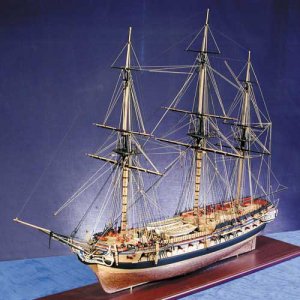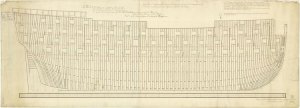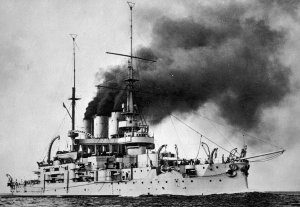Today in Naval History - Naval / Maritime Events in History
9th of June
please use the following link and you will find the details and all events of this day ..... in the following you will find some of the events
1667 – The Raid on the Medway, during the Second Anglo-Dutch War in June 1667, was a successful attack conducted by the Dutch navy on English battleships laid up in the fleet anchorages off Chatham Dockyard and Gillingham in the county of Kent.
It lasts for five days and results in the worst ever defeat of the Royal Navy.
The Raid on the Medway, during the Second Anglo-Dutch War in June 1667, was a successful attack conducted by the Dutch navy on English battleships laid up in the fleet anchorages off Chatham Dockyard and Gillingham in the county of Kent. At the time, the fortress of Upnor Castle and a barrier chain called the "Gillingham Line" were supposed to protect the English ships.
The Dutch, under nominal command of Willem Joseph van Ghent and Lieutenant-Admiral Michiel de Ruyter, over several days bombarded and captured the town of Sheerness, sailed up the Thames estuary to Gravesend, then sailed into the River Medway to Chatham and Gillingham, where they engaged fortifications with cannon fire, burned or captured three capital ships and ten more ships of the line, and captured and towed away the flagship of the English fleet, HMS Royal Charles.
Politically, the raid was disastrous for King Charles' war plans and led to a quick end to the war and a favourable peace for the Dutch. It was one of the worst defeats in the Royal Navy's history, and one of the worst suffered by the British military. Horace George Franks called it the "most serious defeat it has ever had in its home waters."

Attack on the Medway, June 1667, by Van Soest

"Burning English ships" by Jan van Leyden. Shown are the events near Gillingham: in the middle Royal Charles is taken; on the right Pro Patria and Schiedam set Matthias and Charles V alight

Dutch in the Medway. Capture of the Royal Charles June 1667 (PAF4520)

Royal Charles stern piece at the Rijksmuseum in Amsterdam

Scale: 1:48. Full hull model made in the Navy Board style, thought to be the 'Naseby' (1655), an 80-86 gun ship, three-decker ship of the line.
1753 – Launch of French Algonquin, a 74-gun ship of the line of the French Navy. She was launched from Québec City in (New France), on 9 June 1753 and placed into service on 8 January 1754.
In 1755, she was placed into service for the transportation of nine companies of the régiment de la Reine who embarked in Brest on 14 April 1755. The 74-gun ship was armed en flûte with 24 guns to allow for more room for the soldiers. The ship was commanded by Captain Jean Baptiste François de La Villéon. The regiment was also reduced to 360 soldiers. Algonquin was part of the naval squadron that left for Canada. She became separated from the other ships after the departure on 29 May, because of heavy fog at sea.

1772 - HMS Gaspee schooner, Lt. William Dudingston, burned at Namquid Point, Narragansett Bay by American colonists from Providence, Rhode Island.
The Gaspee Affair was a significant event in the lead-up to the American Revolution. HMS Gaspee[1] was a British customs schooner that had been enforcing the Navigation Acts in and around Newport, Rhode Islandin 1772. It ran aground in shallow water while chasing the packet ship Hannah on June 9 near Gaspee Point in Warwick, Rhode Island. A group of men led by Abraham Whipple and John Brown attacked, boarded, and torched the ship.
The event increased hostilities between the American colonists and British officials, following the Boston Massacre in 1770. British officials in Rhode Island wanted to increase their control over trade—legitimate trade as well as smuggling—in order to increase their revenue from the small colony. But Rhode Islanders increasingly protested the Stamp Act, the Townshend Acts, and other British impositions that had clashed with the colony's history of rum manufacturing, maritime trade, and slave trading.
This event and others in Narragansett Bay marked the first acts of violent uprising against the British crown's authority in America, preceding the Boston Tea Party by more than a year and moving the Thirteen Coloniesas a whole toward the war for independence.

1796 - HMS Southampton (32), Cptn. James Macnamara, cut out French corvette Utile (24) from Hyeres Bay
Utile was a gabarre of the French Royal Navy, launched in 1784. The British captured her in the Mediterranean in 1796 and she served briefly there before being laid up in 1797 and sold in 1798.
A typical Gabare like the Utile was the Le Gros Ventre, monographie available by ancre

1799 - Boats of HMS Success (32), Cptn. Shuldham Peard, cut out Belle Aurore.
In May 1799 Captain Shuldham Peard took command of Success, and was sent to serve in the Mediterranean. On 9 June of that year, Success was off Cap de Creus, when Peard spotted a polacca to the north-west. He gave chase, but the vessel took refuge in the harbour of El Port de la Selva, so he sent in his boats to cut her out. After a fierce action, in which Success suffered three killed and nine badly wounded, she proved to be the Bella Aurora, sailing from Genoa to Barcelona with a cargo of cotton, silk and rice, and armed with 10 guns, all 9- or 6-pounders. In his report Peard pointed out that the attack had been carried out in broad daylight by only 43 men against a vessel crewed by 113, protected by boarding netting, and supported from the shore by a small gun battery and a large number of men with muskets. Subsequently, in 1847, a clasp to the Naval General Service Medal marked "9 June 1799" awarded to any surviving members of the action who applied for it. Shortly after, Success was one of the fleet, part of which fought the action of 18 June 1799, in which three French frigates and two brigs were captured.
HMS Success was a 32-gun Amazon-class fifth-rate frigate of the British Royal Navy launched in 1781, which served during the American Revolutionary, French Revolutionary and Napoleonic Wars. The French captured her in the Mediterranean on 13 February 1801, but she was recaptured by the British on 2 September. She continued to serve in the Mediterranean until 1811, and in North America until hulked in 1814, then serving as a prison ship and powder hulk, before being broken up in 1820.

Success destroys the Santa Catalina, 16 March 1782
1800 - Action of 1800/06/09, 9th June 1800
On June 9th 1800, the HMS Kangaroo, 18, Commander George Christopher Pulling, and HMS Speedy, 14, Commander Lord Cochrane, attacked a Spanish convoy off Oropeso, under the shelter of a Spanish battery, sank a 20-gun xebec and three gunboats, and captured three merchant brigs.
1801 - HMS Meleager (32), Cptn. Thomas Bladen Capel, wrecked on the Triangles, Gulf of Mexico.
HMS Meleager was a 32-gun frigate that Greaves and Nickolson built in 1785 at the Quarry House yard in Frindsbury, Kent, England. She served during the French Revolutionary Wars until 1801, when she was wrecked in the Gulf of Mexico.


1808 - Action off Saltholm, 9th June 1808
21 Danish gunboats and 12 mortar shallops, under Cmdr Johan C. Krieger, engages a British escorted convoy in the southern part of the Sound. HMS Turbulent (12) and 11 merchant ships are captured.
The Battle of Saltholm was fought on 9 June 1808 during the Gunboat War. Danish and Norwegian ships attacked a British convoy off the island of Saltholm in Øresund Strait near Copenhagen.

HMS Turbulent captured by a Danish gunboat during the Gunboat War on 9 June 1808
1811 – Launch of French Mont Saint-Bernard was an 82-gun Téméraire-class ship of the line of the French Navy.
Mont Saint-Bernard was an 82-gun Téméraire-class ship of the line of the French Navy.
On 20 April 1814, after the abdication of Napoleon at the end of the War of the Sixth Coalition, she was handed over to the Austrians, who burnt her.

Ship of the line Mont Saint Bernard fitted with Ship Camels, external ballast to sail over shallow waters
1930 – Launch of Black Douglas (later teQuest, Aquarius, Aquarius W; now El Boughaz I), a three-masted staysail auxiliary schooner built for Robert C. Roebling (great-grandson of John A. Roebling and grand-nephew of Washington Roebling) at the Bath Iron Works of Bath, Maine.
Designed by renowned New York City naval architects H.J. Gielow & Co., she is one of the largest steel-hulled schooners ever built.
The Black Douglas (later teQuest, Aquarius, Aquarius W; now El Boughaz I) is a three-masted staysail auxiliary schooner built for Robert C. Roebling (great-grandson of John A. Roebling and grand-nephew of Washington Roebling) at the Bath Iron Works of Bath, Maine, and launched on 9 June 1930. Designed by renowned New York City naval architects H.J. Gielow & Co., she is one of the largest steel-hulled schooners ever built.


1940 – Launch of Roma, named after two previous ships and the city of Rome, was the third Vittorio Veneto-class battleship of Italy's Regia Marina (Royal Navy).
Roma, named after two previous ships and the city of Rome, was the third Vittorio Veneto-class battleship of Italy's Regia Marina (Royal Navy). The construction of both Roma and her sister ship Impero was due to rising tensions around the world and the navy's fear that only two Vittorio Venetos, even in company with older pre-First World War battleships, would not be enough to counter the British and French Mediterranean Fleets. As Roma was laid down almost four years after the first two ships of the class, some small improvements were made to the design, including additional freeboard added to the bow.

1944 - Battle of Ushant - Allied 10th destroyer flotilla (UK/Canadian/Polish ships) engage and defeat remnants of the German 8th destroyer flotilla off Brittany
The Battle of Ushant, also known as the Battle of Brittany, occurred on the early morning of 9 June 1944 and was an engagement between German and Allied destroyer flotillas off the coast of Brittany. The action came shortly after the initial Allied landings in Normandy. After a confused engagement during the night the Allies sank one of the German destroyers and forced another ashore, where she was wrecked.

1959 – The USS George Washington is launched. It is the first nuclear-powered ballistic missile submarine.
USS George Washington (SSBN-598) was the United States's first operational ballistic missile submarine. It was the lead ship of her class of nuclear ballistic missile submarines, was the third United States Navy ship of the name, in honor of George Washington (1732–1799), first President of the United States, and the first of that name to be purpose-built as a warship.

2017 – Launch of Symphony of the Seas is an Oasis-class cruise ship owned and operated by Royal Caribbean International.[8] As of 2019 it is the largest passenger ship in the world by gross tonnage, at 228,021 GT, surpassing her sister Harmony of the Seas

9th of June
please use the following link and you will find the details and all events of this day ..... in the following you will find some of the events
Naval/Maritime History - 27th of August - Today in Naval History - Naval / Maritime Events in History
Today in Naval History - Naval / Maritime Events in History 8 June 1943 - Mutsu – On 8 June 1943, while at Hashirajima fleet anchorage, the Japanese battleship suffered an internal explosion and sank. At the time 113 flying cadets and 40 instructors from the Tsuchiura Naval Air Group were...
shipsofscale.com
1667 – The Raid on the Medway, during the Second Anglo-Dutch War in June 1667, was a successful attack conducted by the Dutch navy on English battleships laid up in the fleet anchorages off Chatham Dockyard and Gillingham in the county of Kent.
It lasts for five days and results in the worst ever defeat of the Royal Navy.
The Raid on the Medway, during the Second Anglo-Dutch War in June 1667, was a successful attack conducted by the Dutch navy on English battleships laid up in the fleet anchorages off Chatham Dockyard and Gillingham in the county of Kent. At the time, the fortress of Upnor Castle and a barrier chain called the "Gillingham Line" were supposed to protect the English ships.
The Dutch, under nominal command of Willem Joseph van Ghent and Lieutenant-Admiral Michiel de Ruyter, over several days bombarded and captured the town of Sheerness, sailed up the Thames estuary to Gravesend, then sailed into the River Medway to Chatham and Gillingham, where they engaged fortifications with cannon fire, burned or captured three capital ships and ten more ships of the line, and captured and towed away the flagship of the English fleet, HMS Royal Charles.
Politically, the raid was disastrous for King Charles' war plans and led to a quick end to the war and a favourable peace for the Dutch. It was one of the worst defeats in the Royal Navy's history, and one of the worst suffered by the British military. Horace George Franks called it the "most serious defeat it has ever had in its home waters."
Attack on the Medway, June 1667, by Van Soest
"Burning English ships" by Jan van Leyden. Shown are the events near Gillingham: in the middle Royal Charles is taken; on the right Pro Patria and Schiedam set Matthias and Charles V alight
Dutch in the Medway. Capture of the Royal Charles June 1667 (PAF4520)
Royal Charles stern piece at the Rijksmuseum in Amsterdam
Scale: 1:48. Full hull model made in the Navy Board style, thought to be the 'Naseby' (1655), an 80-86 gun ship, three-decker ship of the line.
1753 – Launch of French Algonquin, a 74-gun ship of the line of the French Navy. She was launched from Québec City in (New France), on 9 June 1753 and placed into service on 8 January 1754.
In 1755, she was placed into service for the transportation of nine companies of the régiment de la Reine who embarked in Brest on 14 April 1755. The 74-gun ship was armed en flûte with 24 guns to allow for more room for the soldiers. The ship was commanded by Captain Jean Baptiste François de La Villéon. The regiment was also reduced to 360 soldiers. Algonquin was part of the naval squadron that left for Canada. She became separated from the other ships after the departure on 29 May, because of heavy fog at sea.
1772 - HMS Gaspee schooner, Lt. William Dudingston, burned at Namquid Point, Narragansett Bay by American colonists from Providence, Rhode Island.
The Gaspee Affair was a significant event in the lead-up to the American Revolution. HMS Gaspee[1] was a British customs schooner that had been enforcing the Navigation Acts in and around Newport, Rhode Islandin 1772. It ran aground in shallow water while chasing the packet ship Hannah on June 9 near Gaspee Point in Warwick, Rhode Island. A group of men led by Abraham Whipple and John Brown attacked, boarded, and torched the ship.
The event increased hostilities between the American colonists and British officials, following the Boston Massacre in 1770. British officials in Rhode Island wanted to increase their control over trade—legitimate trade as well as smuggling—in order to increase their revenue from the small colony. But Rhode Islanders increasingly protested the Stamp Act, the Townshend Acts, and other British impositions that had clashed with the colony's history of rum manufacturing, maritime trade, and slave trading.
This event and others in Narragansett Bay marked the first acts of violent uprising against the British crown's authority in America, preceding the Boston Tea Party by more than a year and moving the Thirteen Coloniesas a whole toward the war for independence.
1796 - HMS Southampton (32), Cptn. James Macnamara, cut out French corvette Utile (24) from Hyeres Bay
Utile was a gabarre of the French Royal Navy, launched in 1784. The British captured her in the Mediterranean in 1796 and she served briefly there before being laid up in 1797 and sold in 1798.
A typical Gabare like the Utile was the Le Gros Ventre, monographie available by ancre
1799 - Boats of HMS Success (32), Cptn. Shuldham Peard, cut out Belle Aurore.
In May 1799 Captain Shuldham Peard took command of Success, and was sent to serve in the Mediterranean. On 9 June of that year, Success was off Cap de Creus, when Peard spotted a polacca to the north-west. He gave chase, but the vessel took refuge in the harbour of El Port de la Selva, so he sent in his boats to cut her out. After a fierce action, in which Success suffered three killed and nine badly wounded, she proved to be the Bella Aurora, sailing from Genoa to Barcelona with a cargo of cotton, silk and rice, and armed with 10 guns, all 9- or 6-pounders. In his report Peard pointed out that the attack had been carried out in broad daylight by only 43 men against a vessel crewed by 113, protected by boarding netting, and supported from the shore by a small gun battery and a large number of men with muskets. Subsequently, in 1847, a clasp to the Naval General Service Medal marked "9 June 1799" awarded to any surviving members of the action who applied for it. Shortly after, Success was one of the fleet, part of which fought the action of 18 June 1799, in which three French frigates and two brigs were captured.
HMS Success was a 32-gun Amazon-class fifth-rate frigate of the British Royal Navy launched in 1781, which served during the American Revolutionary, French Revolutionary and Napoleonic Wars. The French captured her in the Mediterranean on 13 February 1801, but she was recaptured by the British on 2 September. She continued to serve in the Mediterranean until 1811, and in North America until hulked in 1814, then serving as a prison ship and powder hulk, before being broken up in 1820.
Success destroys the Santa Catalina, 16 March 1782
1800 - Action of 1800/06/09, 9th June 1800
On June 9th 1800, the HMS Kangaroo, 18, Commander George Christopher Pulling, and HMS Speedy, 14, Commander Lord Cochrane, attacked a Spanish convoy off Oropeso, under the shelter of a Spanish battery, sank a 20-gun xebec and three gunboats, and captured three merchant brigs.
1801 - HMS Meleager (32), Cptn. Thomas Bladen Capel, wrecked on the Triangles, Gulf of Mexico.
HMS Meleager was a 32-gun frigate that Greaves and Nickolson built in 1785 at the Quarry House yard in Frindsbury, Kent, England. She served during the French Revolutionary Wars until 1801, when she was wrecked in the Gulf of Mexico.
1808 - Action off Saltholm, 9th June 1808
21 Danish gunboats and 12 mortar shallops, under Cmdr Johan C. Krieger, engages a British escorted convoy in the southern part of the Sound. HMS Turbulent (12) and 11 merchant ships are captured.
The Battle of Saltholm was fought on 9 June 1808 during the Gunboat War. Danish and Norwegian ships attacked a British convoy off the island of Saltholm in Øresund Strait near Copenhagen.
HMS Turbulent captured by a Danish gunboat during the Gunboat War on 9 June 1808
1811 – Launch of French Mont Saint-Bernard was an 82-gun Téméraire-class ship of the line of the French Navy.
Mont Saint-Bernard was an 82-gun Téméraire-class ship of the line of the French Navy.
On 20 April 1814, after the abdication of Napoleon at the end of the War of the Sixth Coalition, she was handed over to the Austrians, who burnt her.
Ship of the line Mont Saint Bernard fitted with Ship Camels, external ballast to sail over shallow waters
1930 – Launch of Black Douglas (later teQuest, Aquarius, Aquarius W; now El Boughaz I), a three-masted staysail auxiliary schooner built for Robert C. Roebling (great-grandson of John A. Roebling and grand-nephew of Washington Roebling) at the Bath Iron Works of Bath, Maine.
Designed by renowned New York City naval architects H.J. Gielow & Co., she is one of the largest steel-hulled schooners ever built.
The Black Douglas (later teQuest, Aquarius, Aquarius W; now El Boughaz I) is a three-masted staysail auxiliary schooner built for Robert C. Roebling (great-grandson of John A. Roebling and grand-nephew of Washington Roebling) at the Bath Iron Works of Bath, Maine, and launched on 9 June 1930. Designed by renowned New York City naval architects H.J. Gielow & Co., she is one of the largest steel-hulled schooners ever built.
1940 – Launch of Roma, named after two previous ships and the city of Rome, was the third Vittorio Veneto-class battleship of Italy's Regia Marina (Royal Navy).
Roma, named after two previous ships and the city of Rome, was the third Vittorio Veneto-class battleship of Italy's Regia Marina (Royal Navy). The construction of both Roma and her sister ship Impero was due to rising tensions around the world and the navy's fear that only two Vittorio Venetos, even in company with older pre-First World War battleships, would not be enough to counter the British and French Mediterranean Fleets. As Roma was laid down almost four years after the first two ships of the class, some small improvements were made to the design, including additional freeboard added to the bow.
1944 - Battle of Ushant - Allied 10th destroyer flotilla (UK/Canadian/Polish ships) engage and defeat remnants of the German 8th destroyer flotilla off Brittany
The Battle of Ushant, also known as the Battle of Brittany, occurred on the early morning of 9 June 1944 and was an engagement between German and Allied destroyer flotillas off the coast of Brittany. The action came shortly after the initial Allied landings in Normandy. After a confused engagement during the night the Allies sank one of the German destroyers and forced another ashore, where she was wrecked.
1959 – The USS George Washington is launched. It is the first nuclear-powered ballistic missile submarine.
USS George Washington (SSBN-598) was the United States's first operational ballistic missile submarine. It was the lead ship of her class of nuclear ballistic missile submarines, was the third United States Navy ship of the name, in honor of George Washington (1732–1799), first President of the United States, and the first of that name to be purpose-built as a warship.
2017 – Launch of Symphony of the Seas is an Oasis-class cruise ship owned and operated by Royal Caribbean International.[8] As of 2019 it is the largest passenger ship in the world by gross tonnage, at 228,021 GT, surpassing her sister Harmony of the Seas



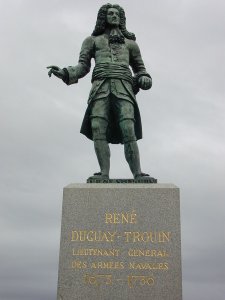


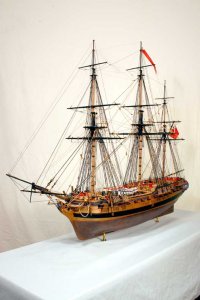
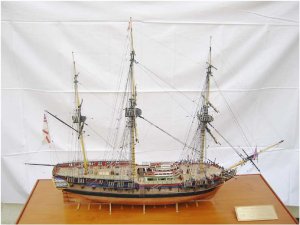
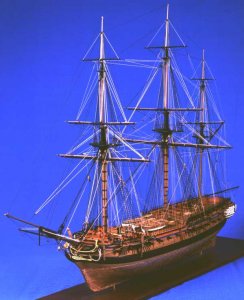
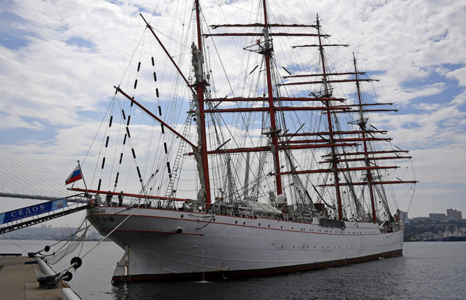
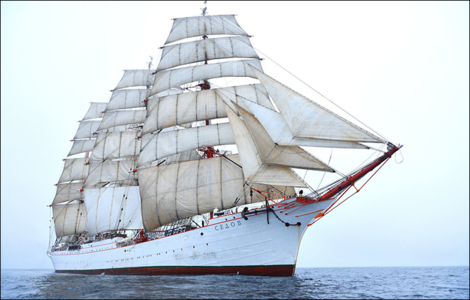
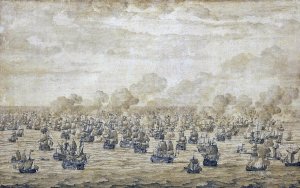
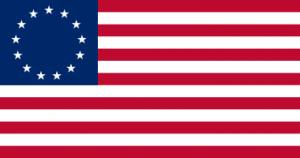
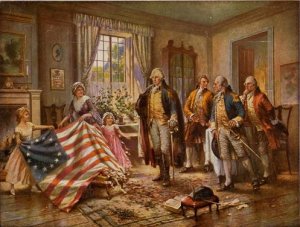
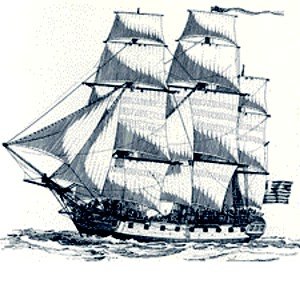
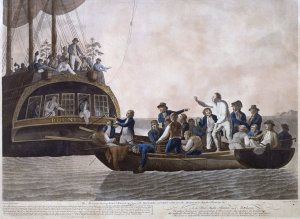
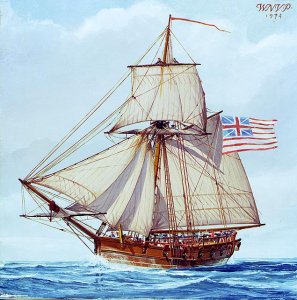
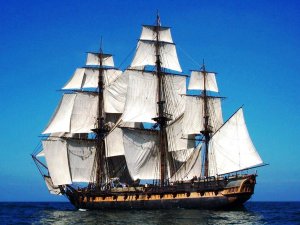
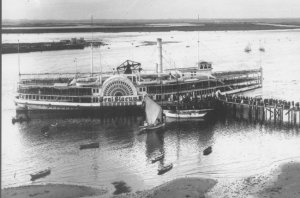
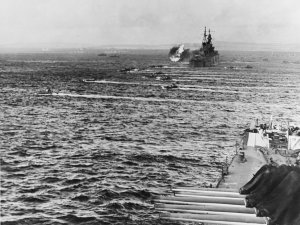
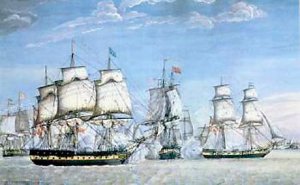
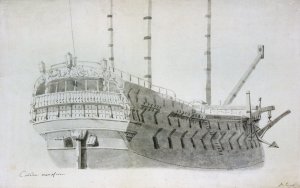


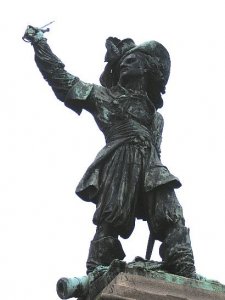



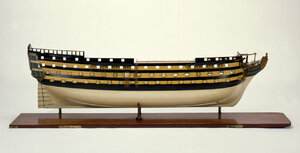
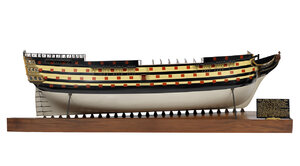
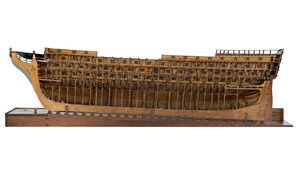
 age in
age in 